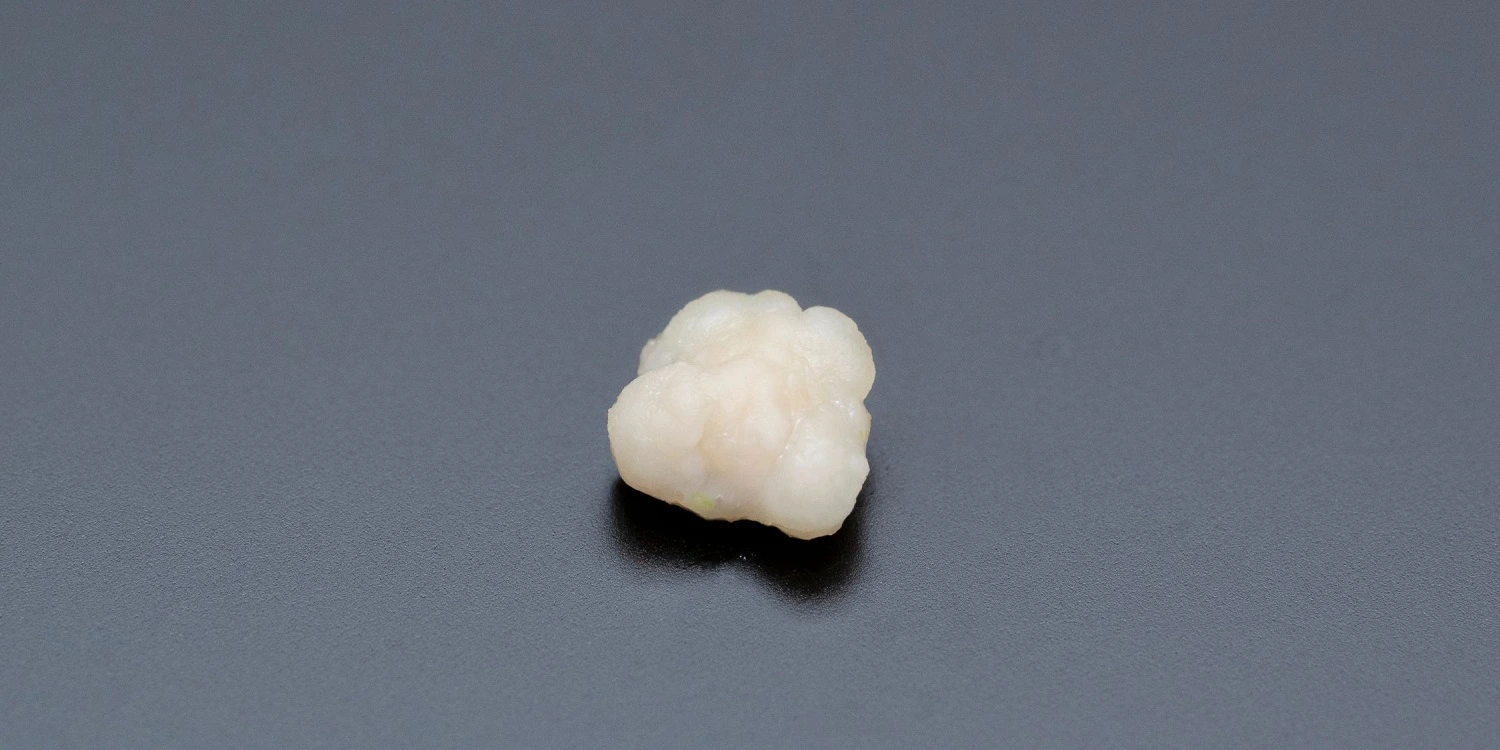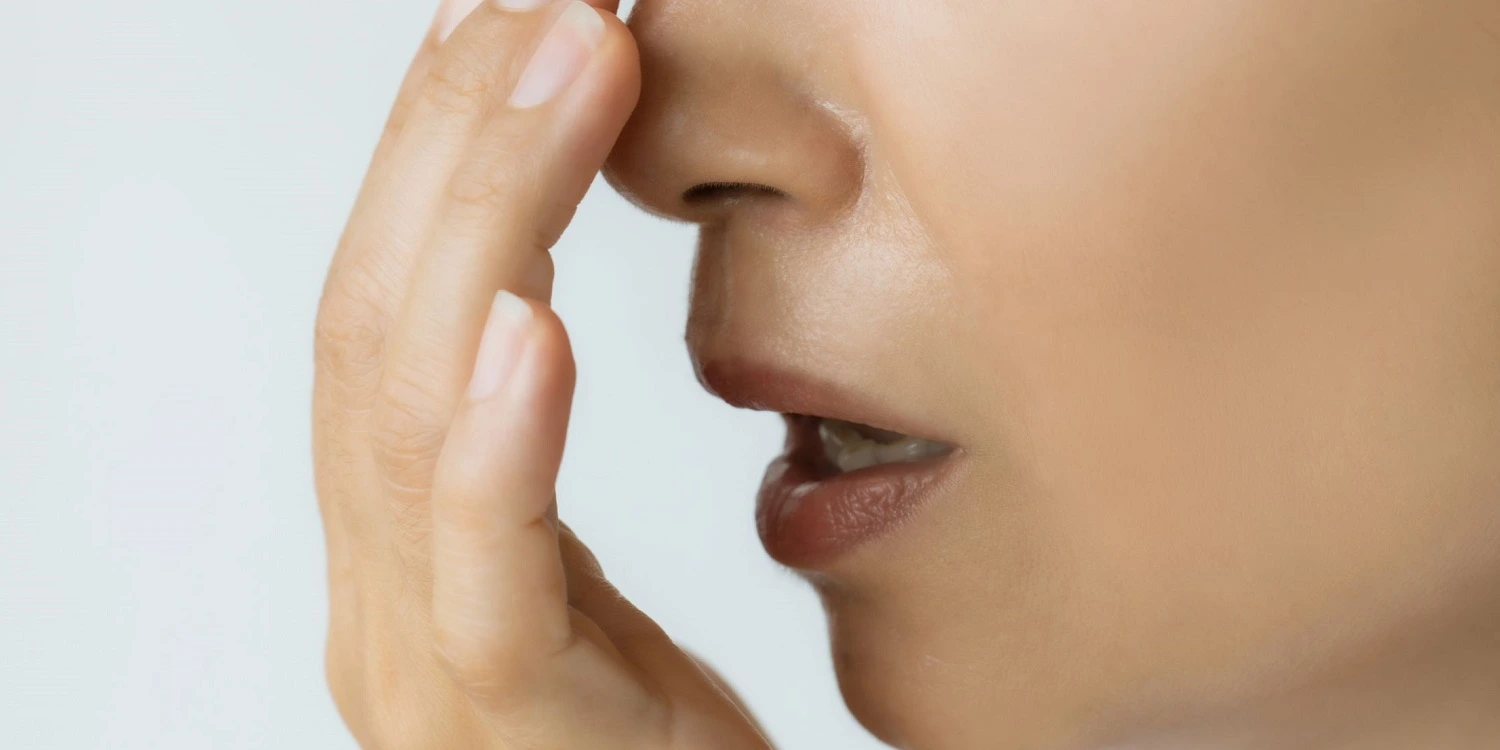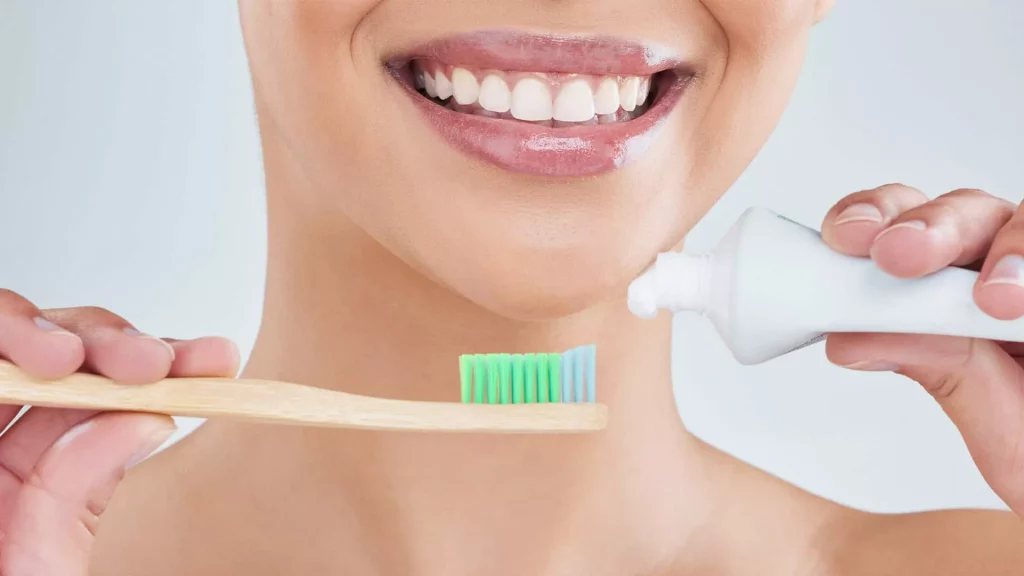Last Updated on: 26th November 2025, 09:49 am
Tonsils are small, soft, oval, pillow-like lymphatic organs located at the back of the mouth and at the top of the throat on both sides. They form the immune system’s first line of defense against bacteria, viruses, and other microorganisms that enter the mouth. Inside, they contain immune cells and have the function of preventing infections.
What are Tonsil Stones or Tonsillitis?

Tonsil stones, also called “tonsilloliths or tonsilloliths,” are small lumps that grow on the tonsils from hardened material and begin as small yellowish spots. These grow little by little until they become large stones or stones. They sometimes occur in people who have large, irregular tonsils. They can also occur in people with recurrent tonsillitis, which is more common in adolescence and early adulthood.
What do Tonsil Stones Look Like?

It is possible that they are large in size since they can measure up to 1 cm, but they can also be 1-2 mm in size and this makes it difficult to see them; Rarely, some studies have recorded stones measuring more than 4 cm. They are generally soft, but over time they can harden. They are rough in appearance and light yellowish or white in color. When seen as spots they do not represent a health risk, however, they can cause bad breath among other symptoms; It is possible to remove them easily with home handling when they are small and soft.
What Causes Tonsil Stones?
Tonsils are made of lymphoid tissue, which means that small indentations or crypts can be generated on their surface, deep enough to trap particles of microorganisms, cell remains, food residues, and the minerals present in saliva such as phosphorus, ammonium, magnesium, and calcium. Over time, these residues harden and form stones. Tonsillolithiasis, or tonsillar stone formation, is believed to occur primarily due to the repeated inflammation of the tonsillar crypts with recurrent tonsillitis and calcification.
What are the Symptoms of Tonsil Stones?
Tonsil stones may be removed by brushing your teeth or consuming food or liquid, without causing any symptoms. However, the symptoms that may occur are:
- Bad breath (halitosis): People may experience severe bad breath, due to bacteria or possibly an infection. For additional information on halitosis and its treatment, you can refer to our article about it.
bad breath - Cough: When you feel a foreign body, it can cause an annoying and uncomfortable cough.
- Earache: They can develop in any area of the amygdala, and they may affect some nerve pathway that it shares with the ear. This can radiate the pain, even if it does not touch the ear
- Sore throat: The stone may cause pain, depending on the size.
- Bad mouth taste.
- Small white or yellow stones that you can spit out: When you check the back of your mouth, you may see spots or white solid material.
- Bad breath (halitosis): People may experience severe bad breath, due to bacteria or possibly an infection. For additional information on halitosis and its treatment, you can refer to our article about it.
Other symptoms include:
- Difficulty swallowing: Depending on the location, it may be difficult to swallow food or liquid, feeling that something is holding it back, since it can also be painful.
- Sensation that something is stuck in the throat.
- Hoarseness.
- Small white spots on the tonsils.
- Inflammation and redness of the tonsils.
When should you Seek Medical Attention?
In very rare cases, it may become complicated and present an infection, or the stone is very large and other symptoms. Therefore, it is recommended to seek medical attention if the patient exhibits:
- Severe sore throat that gets worse quickly
- Difficulty opening the mouth
- Pain when opening the mouth
- Difficulty to swallow
- Babeo o le cuesta tragar saliva
- Swelling in the face and neck, or inside the mouth or throat
- Fever
- Headache
- Difficulty speaking or breathing
- Swollen glands near the jaw or in the neck
How can I Treat Tonsil Stones at Home?
Tonsilloliths can be seen initially with focused light and by opening the mouth wide. If it cannot be seen but symptoms occur, diagnostic tests may be required to allow the location to become visible, which will be indicated by the dentist or doctor.
The following tips can help remove tonsil stones at home:
- Gargle: with mouthwash or salt water It helps with bad odor and can remove lodged stones. For further insights on selecting the best mouthwash, consider referring to this article.
- Phlegm: Sometimes coughing hard helps to remove these stones or loosen them.
- Cotton swab: Be careful before you go to hurt your tonsils. Try massaging around the tonsils with the cotton swab to push the loose stone out of the tonsil.

Treatment and Removal of Tonsilloliths
The treatment of tonsilloliths depends on their size and the existence of symptoms.
Unique large tonsilloliths:
Single and large tonsilloliths must be removed to avoid recurrent episodes of tonsillitis. To eliminate them, there are several methods:
- Manual compression: Sometimes using manual pressure can help evacuate tonsil stones.
- Curettage: Depending on how deep-seated the tonsillolith is, a scraping or curettage may make it possible to remove it.
- Incision and surgical removal: It is used when the calculations are too large.
- Cryptolysis: A laser or radiofrequency wand is used to shrink the tonsillar crypts, making stones less likely.
Multiple and small tonsilloliths:
When tonsilloliths are numerous, removing them is not a viable option, and complete removal of the tonsils is usually preferred. However, if symptoms do not occur, it is possible to avoid tonsillectomy by carrying out adequate control and follow-up.
When home methods do not work, it is best to seek help from a professional.
How to Prevent Tonsil Stones?
The best way to prevent tonsilloliths is to practice good oral hygiene:
- Brush three times a day and floss regularly. Be sure to brush the front and back of your tongue as well. To learn more about how to brush your teeth, you can check this article.
- Avoid smoking and excess alcohol.
- Gargle with salt water after eating or use an alcohol-free mouthwash.
- Use a water pick to clean your mouth and help dislodge tonsil stones.
- Stay hydrated by drinking plenty of water and cutting down on sugary drinks as much as possible.

Tonsil stones can be harmless and go away on their own, but keeping your mouth clean and free of debris is a more efficient way to prevent the development of tonsil stones.
Contact us
If you have any questions about this or other topics, you can contact us at Channel Island Family Dental as well as our Facebook page. We look forward to your visit and we will make a timely diagnosis. Our dentists in Oxnard, Saint Paula, Venture, Newbury Park, and Port Hueneme will be able to guide you toward the best treatment to take care of your health and give you back your best smile.
Frequently Asked Questions (FAQ)
Bibliography
1. Lee, K., & Laube, J. (s/f).What are tonsil stones? Symptoms, causes, diagnosis, treatment, and prevention. Everydayhealth.com. https://www.everydayhealth.com/tonsil-stones/
2. Tonsil stones (tonsilloliths). (s/f). WebMD. https://r.search.yahoo.com/_ylt=AwrFcP2RdvZkFmcFcQGrcgx.;_ylu=Y29sbwNiZjEEcG9zAzUEdnRpZAMEc2VjA3Ny/RV=2/RE=1693902610/RO=10/RU=https%3a%2f%2fwww.webmd.com%2foral-health%2ftonsil-stones-tonsilloliths-treatment-and-prevention/RK=2/RS=L.nm28QhDceUQOpkU2kREqkK_pw-
3. Healthdirect Australia. (2023). Tonsil stones. https://r.search.yahoo.com/_ylt=AwrFD5CkdvZklR4FOLurcgx.;_ylu=Y29sbwNiZjEEcG9zAzIEdnRpZAMEc2VjA3Ny/RV=2/RE=1693902629/RO=10/RU=https%3a%2f%2fwww.healthdirect.gov.au%2ftonsil-stones/RK=2/RS=tkuepxwJz6tjWDNzthN6twzil9Y-
4. Ferguson, M., Aydin, M., & Mickel, J. (2014). Halitosis and the tonsils: a review of management. Otolaryngology–Head and Neck Surgery, 151(4), 567-574. https://scholar.google.com/scholar_url?url=https://journals.sagepub.com/doi/abs/10.1177/0194599814544881&hl=en&sa=T&oi=gsb&ct=res&cd=0&d=9239724338939813605&ei=6Hj2ZLPNOI6Vy9YPvOaWiAI&scisig=AFWwaeauNL8JbHh14-5amUfdzflt
5. Chang, C. Y., & Thrasher, R. (2012). Coblation cryptolysis to treat tonsil stones: a retrospective case series. Ear, Nose & Throat Journal, 91(6), 238-254. https://scholar.google.com/scholar_url?url=https://journals.sagepub.com/doi/abs/10.1177/014556131209100605&hl=en&sa=T&oi=gsb&ct=res&cd=0&d=8866193290408092393&ei=9nj2ZLaaA9zZsQLU8bGYDA&scisig=AFWwaebkuKSFxb0jN5OPrv7NVeH7
6. de Oliveira , C. deN. , Amaral , T. M. , Abdo , E. N. , & Mesquita , R. A. (2013). Bilateral tonsilloliths and calcified carotid atheromas: case report and literature review.Journal of cranio-maxillo-facial surgery : official publication of the European Association for Cranio-Maxillo-Facial Surgery, 41(2), 179–182. https://doi.org/10.1016/j.jcms.2012.07.011















